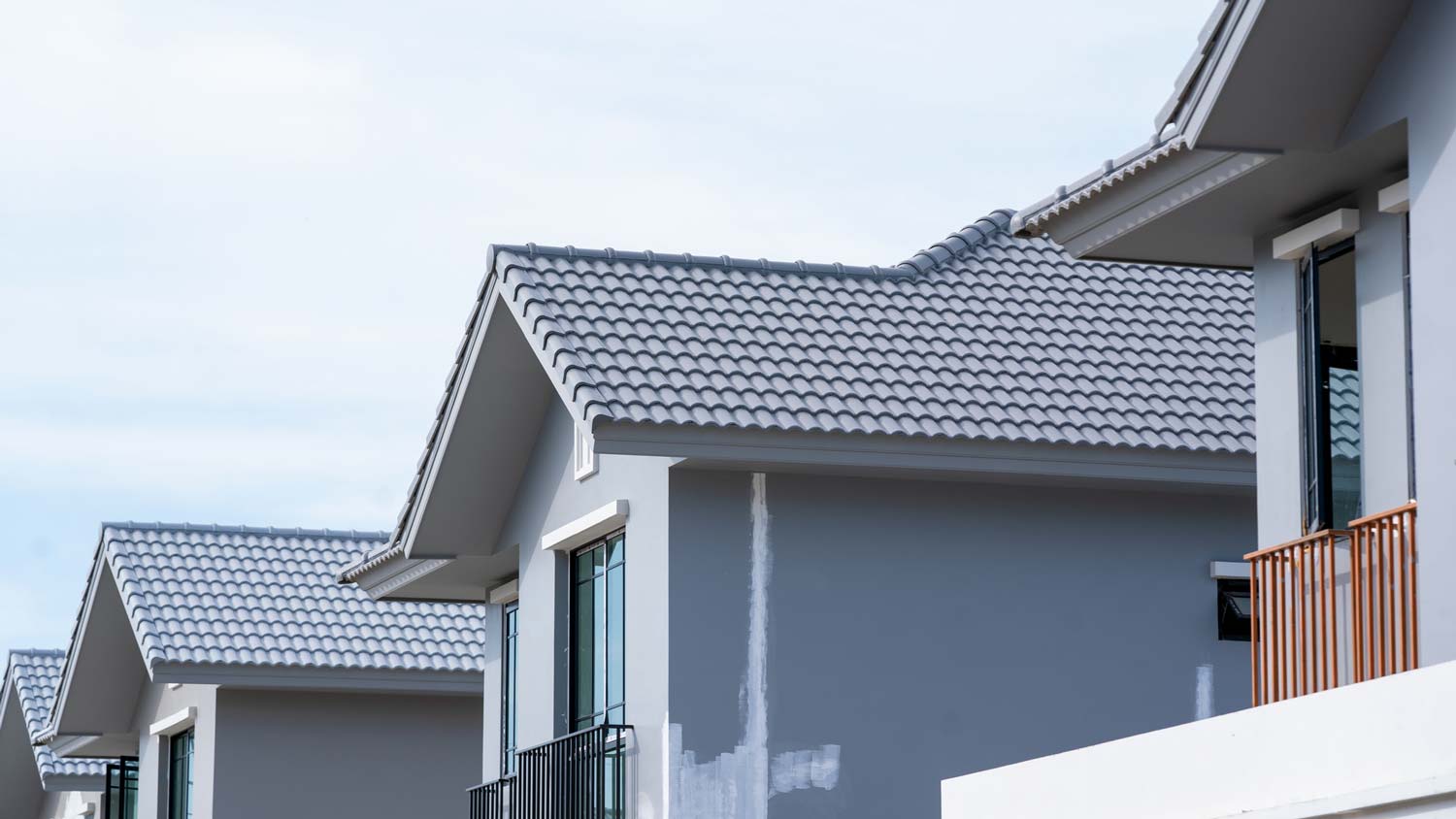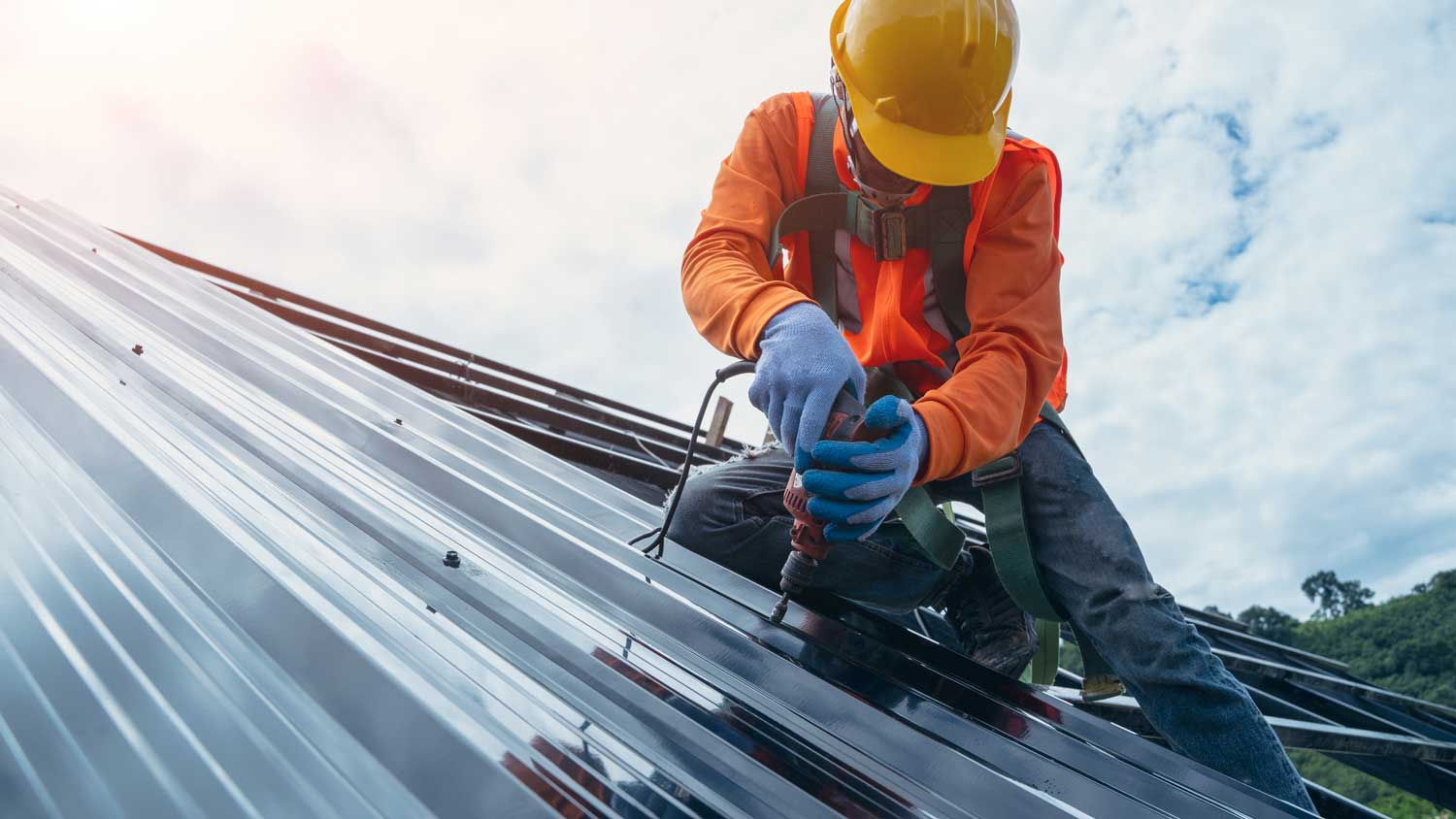
A metal roof can defend your home against Ohio’s varying weather conditions. Learn how much a metal roof costs in Columbus, OH.
Strengthen your home's existing roof


Installing a metal roof over existing asphalt shingles adds another layer of protection to perhaps the most critical part of your home. But you may have wondered: can you put a metal roof over shingles? The answer varies based on where you live. While not removing the old roofing materials is an excellent option in many cases, the building code in your location will dictate whether you can put a metal roof over the shingles on your home.
Use this guide to learn how to install metal roofing over shingles. But before getting started, homeowners should know that installing roof shingles or metal roofing is really a job for professional roofers. The project doesn't lend itself well to DIY due to safety issues and the need for strong roofing knowledge.
Typical house construction is designed to handle one or two layers of roofing material at most. In fact, it's common for municipalities to limit the number of asphalt shingle layers on roofs to no more than two.
The rules for installing metal roofing over shingles are similar. However, in some cases, building code and the condition of your roof may require removing the existing material before installing more roofing. If it's possible to put a metal roof over your existing one, there are several benefits your home can enjoy that leaving the shingles in place can provide.
It saves on removal and disposal costs.
It may not require additional underlayment protection.
It adds additional waterproofing.
It has sound and weather insulation qualities.
The cost of installing a metal roof over shingles is highly variable, ranging from $4 to $30 per square foot for materials. Including labor, you can expect a price tag of between $5,700 and $16,140 on average. However, prices on a large roof can easily reach much more than that for premium materials like copper.
That may sound like a lot compared to traditional roof replacement costs. However, metal roofs have lifespans that range from 50 to over 100 years, so it'll likely be the last time you'll need to replace your home's roofing material.

Generally, three common types of metal roofing exist for residential use.
Standing seam metal roofing consists of long panels that extend from the roof's peak to the eaves and connect to each other side to side with hidden fasteners.
Metal shingles are typically finished with stone-like coating for protection and aesthetics and come in smaller panels that lock together during installation. Stone-coated shingles often resemble traditional roof shingles.
Corrugated metal roofing appears similar to a standing seam roof, except the fasteners are exposed. A corrugated metal roof is often the most budget-friendly option. However, they have more significant leak potential than the other two types.
Each roofing type is available in various metals, four of which are the most readily available. While all metal roofing systems can withstand harsh weather and are considered highly durable, each kind of metal has unique qualities to consider.
Multiple styles available
Cost efficient
Dent resistant
Substantial expansion and contraction rate
Noisy during rainfall
Lightweight
Recyclable
Corrosion resistant
Highest expansion and contraction rate
Prone to denting
Desirable appearance
Expected to last up to 100 years
Uneven patina potential
Costly
Highly desirable appearance and patina
No added coatings are necessary
Expensive
Very high expansion and contraction rate

While installing a metal roof over shingles isn't a good idea for average DIYers because of the danger factor and precise installation requirements, here's a look at how your roofing contractor or professional will approach the project so you can follow along as it progresses.
Starting with an inspection, your roofing contractor will determine if any repairs are necessary to the existing roof before beginning work. Individual shingles with damage may need replacement, while a roof with extensive damage may need removal before proceeding.
If the inspection turns up moderate roof damage, your contractor will install either a felt or synthetic underlayment directly on top of the existing shingles. Roofs in good shape aren't likely to require underlayment installation.
On top of the old shingles or the new underlayment, your roofing pro will install a series of battens or furring strips for the metal roof to provide an important gap between the roof deck and the new roofing material. The gap provides insulating qualities, sound dampening, and airflow and eliminates damage from contact with the material below during expansion and contraction.
Depending on your metal roof type, the contractor will cut, place, and secure the metal panels to the battens or furring strips using exposed or hidden fasteners.
Your metal roof will include foam closure strips and flashings specifically for your roofing type that your roofer will install in various locations, such as the ridges, eaves, rakes, and around chimneys, plumbing stacks, and roof vents. The pieces may install over or under the roof material depending on their specific job.
Of course, the first tip for installing a metal roof is to have a professional perform the task. However, should you choose to tackle the project on your own, there are a few things to consider and metal roofing how-to tips to know before and during installation.
Use extreme caution. Working from ladders is dangerous, and metal roofs are slippery. Falling is a real danger.
Measure carefully for materials and add sufficient wastage when ordering.
Allow for expansion and contraction of the material according to the manufacturer's instructions.
Avoid over tightening the fasteners.
Allow plenty of installation time to avoid the need to rush the job.
While an experienced DIYer with extensive roofing knowledge may be able to pull off a metal roof installation, it's not a job that's safe for most homeowners to consider. The labor cost of hiring a nearby metal roof installer to perform the work is a small price for safety. It ensures a correct installation that's warranted against workmanship and material defects.
From average costs to expert advice, get all the answers you need to get your job done.

A metal roof can defend your home against Ohio’s varying weather conditions. Learn how much a metal roof costs in Columbus, OH.

Dealing with a visibly damaged roof or leak? Learn about roof repair costs in Columbus to see how much you’ll need to budget for a permanent solution.

Learn about roof replacement costs in Columbus and what factors are at play to budget accurately and make sure you’re getting a fair price.

Do roof vents work? Is roof ventilation necessary? Can I have too much ventilation? Here are the top 11 myths about roof vents and the real answers you deserve.

Furring strips support your metal roof and improve ventilation, but only if spaced correctly. Here’s the ideal spacing of furring strips for metal roofs.

DIYing roof repairs can save you thousands over the life of your roof. Learn how to replace damaged roof shingles to get the job done correctly.